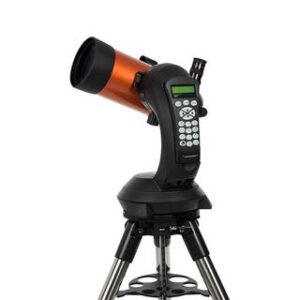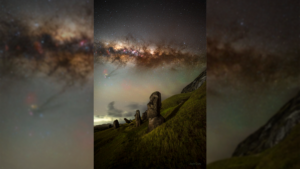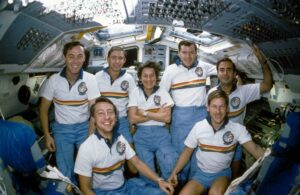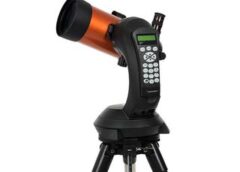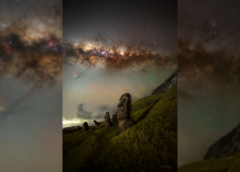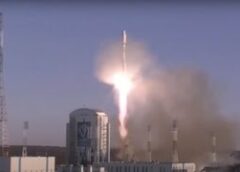Astronomers have discovered a massive extrasolar planet, or “exoplanet,” orbiting an ultracool dwarf star that is way too small to host such a world, challenging scientists’ models of how planets and planetary systems are born. The planet in question, designated LHS 3154 b, is 13 times as massive as Earth, meaning that it has a mass similar to the solar system ice giant Neptune, yet it closely orbits a tiny dwarf star, which is nine times less massive than the sun. This means the ratio between the Neptune-like world and…
Read MoreErickson to Retire after Over 40 Years of Service
3 min read Erickson to Retire after Over 40 Years of Service December 1, 2023 It is my pleasure to share information about new hires within NASA’s Science Mission Directorate (SMD) on this blog, and it is also my bittersweet duty to share information about retirements. After 40 years with NASA, Kristen Erickson – Director of NASA Science Engagement & Partnerships Division — will retire at the end of 2023. Kristen has made many contributions to the agency. Over the years she has mentored dozens of scientists and engineers to…
Read MoreNASA Honors Steve Jurczyk, Former Acting Administrator, Space Leader
Former NASA Acting Administrator Steve Jurczyk delivering remarks during NASA’s 60th anniversary. NASA/Joel Kowsky Former NASA Acting Administrator Steve Jurczyk passed away Nov. 23, at the age of 61, following a battle with pancreatic cancer. During his career, which spanned more than three decades with the agency, Jurczyk rose in ranks to associate administrator, the highest-ranking civil servant, a position he held from May 2018 until January 2021. He ultimately went on to serve as acting administrator between administration changes, serving in that position from January 2021 until his retirement…
Read MoreHubble Celebrates 30th Anniversary of Servicing Mission 1
6 min read Hubble Celebrates 30th Anniversary of Servicing Mission 1 Astronaut F. Story Musgrave works in the space shuttle Endeavour’s cargo bay while the solar array panels on the Hubble Space Telescope are deployed during the final Servicing Mission 1 spacewalk. NASA In the pre-dawn hours on Dec. 2, 1993, the space shuttle Endeavour launched from Kennedy Space Center in Florida on a critical mission to repair NASA’s Hubble Space Telescope. Hubble was designed to be serviced in space with components that astronauts can slide in and out of…
Read MoreNASA Research Pilot David Zahn
“Everyone needs an anchor from their community to motivate and inspire them to move forward. I want to be a motivational anchor for the next generation of minorities.” – David Zahn, NASA Research Pilot, Ames Research Center
Read MoreCounteracting Bone and Muscle Loss in Microgravity
In microgravity, without the continuous load of Earth’s gravity, the tissues that make up bones reshape themselves. Bone cells readjust their behaviors—the cells that build new bone slow down, while the cells that break down old or damaged bone tissue keep operating at their normal pace so that breakdown outpaces growth, producing weaker and more brittle bones. For every month in space, astronauts’ weight-bearing bones become roughly 1% less dense if they don’t take precautions to counter this loss. Muscles, usually activated by simply moving around on Earth, also weaken…
Read MoreHubble Views a Double Cluster of Glowing Galaxies
2 min read Hubble Views a Double Cluster of Glowing Galaxies This NASA Hubble Space Telescope image of Abell 3192 holds two independent galaxy clusters. ESA/Hubble & NASA, G. Smith, H. Ebeling, D. Coe This Hubble image features a massive cluster of brightly glowing galaxies, first identified as Abell 3192. Like all galaxy clusters, this one is suffused with hot gas that emits powerful X-rays, and it is enveloped in a halo of invisible dark matter. All this unseen material – not to mention the many galaxies visible in this image –…
Read MoreDecember’s Night Sky Notes: A Flame in the Sky – the Orion Nebula
3 min read December’s Night Sky Notes: A Flame in the Sky – the Orion Nebula Orion constellation Stellarium Web by Kat Troche of the Astronomical Society of the Pacific It’s that time of year again: Winter! Here in the Northern Hemisphere, the clear, crisp sky offers spectacular views of various objects, the most famous of all being Orion the Hunter. As we’ve previously mentioned, Orion is a great way to test your sky darkness. With the naked eye, you can easily spot this hourglass-shaped constellation. Known as an epic…
Read MoreNASA’s Educational CubeSats: Small Satellites, Big Impact
The CubeSats from NASA’s ELaNa 38 mission were deployed from the International Space Station on Jan. 26, 2022. Seen here is the deployment of The Aerospace Corporation’s Daily Atmospheric and Ionospheric Limb Imager (DAILI). NASA Despite their small size, the satellites launching through NASA’s CubeSat Launch Initiative (CSLI) missions have a big impact, creating access to space for many who might not otherwise have the opportunity. One recent mission tells the story of four teams of researchers and engineers who conceived, built, launched, and collected data from these shoebox-sized satellites,…
Read MoreNuclear-powered Dragonfly mission to Saturn moon Titan delayed until 2028, NASA says
NASA has set a provisional launch date of July 2028 for its Dragonfly mission, meant to explore Saturn’s largest moon Titan, with budgetary uncertainty cited as the reason for the project’s one-year delay. The Dragonfly team can now move forward with the next stage of development — Phase C — for the car-sized, nuclear-powered rotorcraft drone that will fly above and land on the sands of Titan, a world planetary scientists believe is rich in organic molecules. “The Dragonfly team has successfully overcome a number of technical and programmatic challenges…
Read More